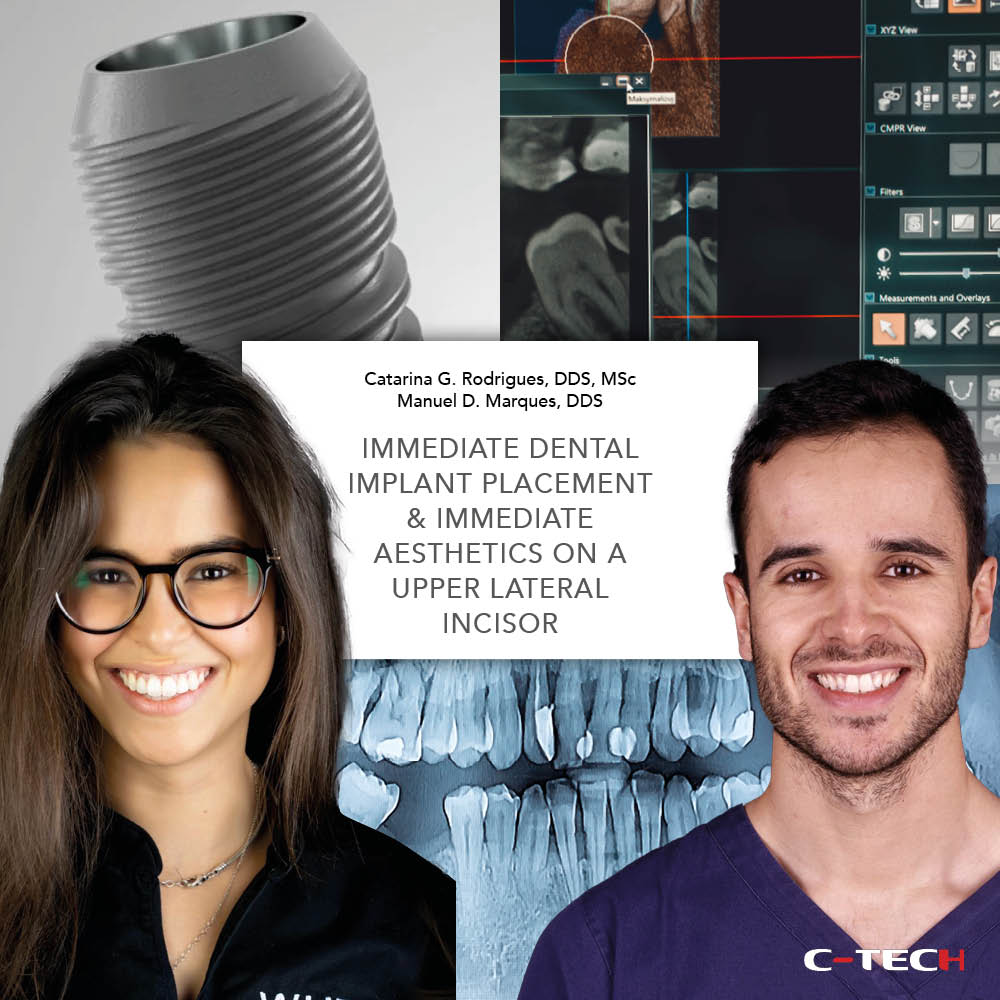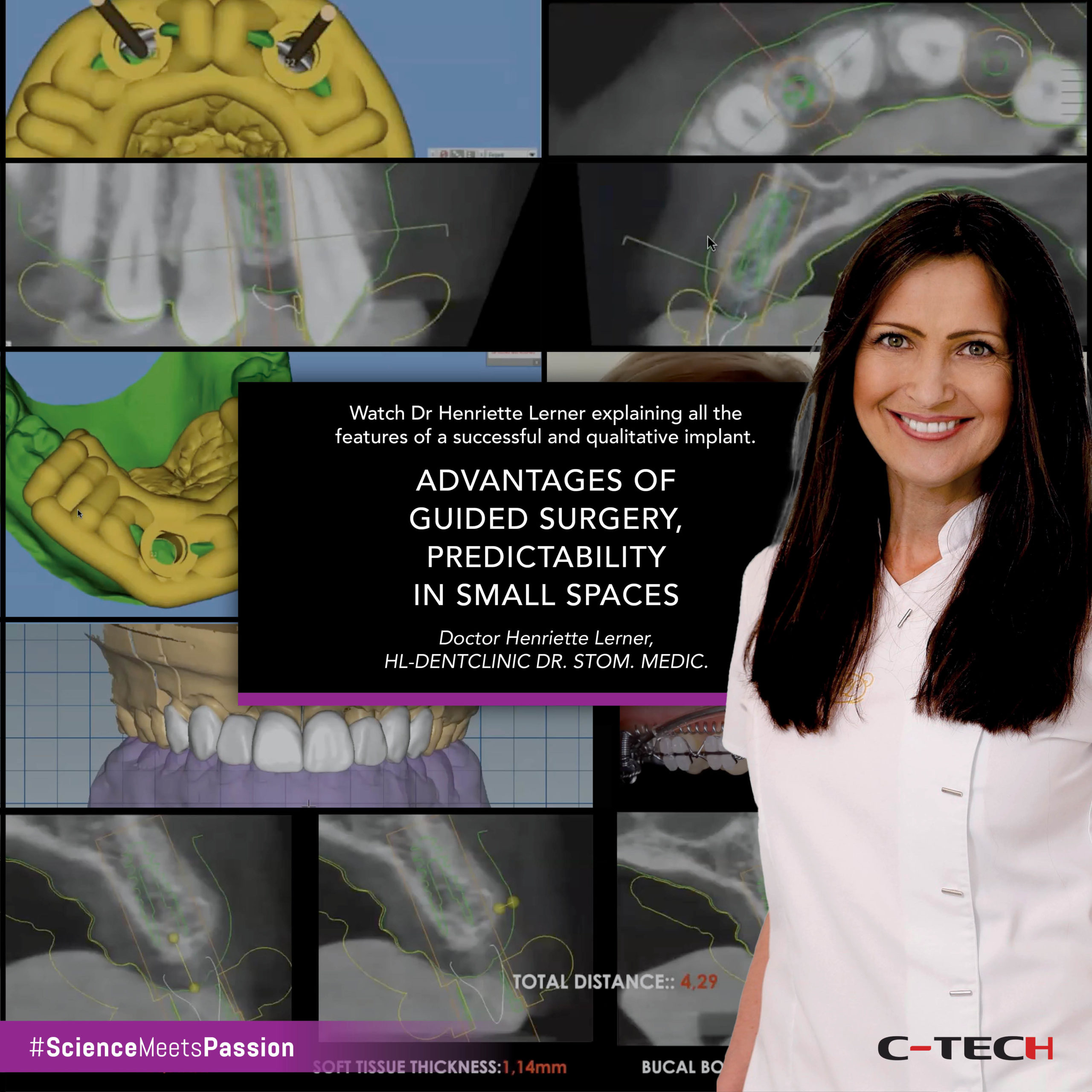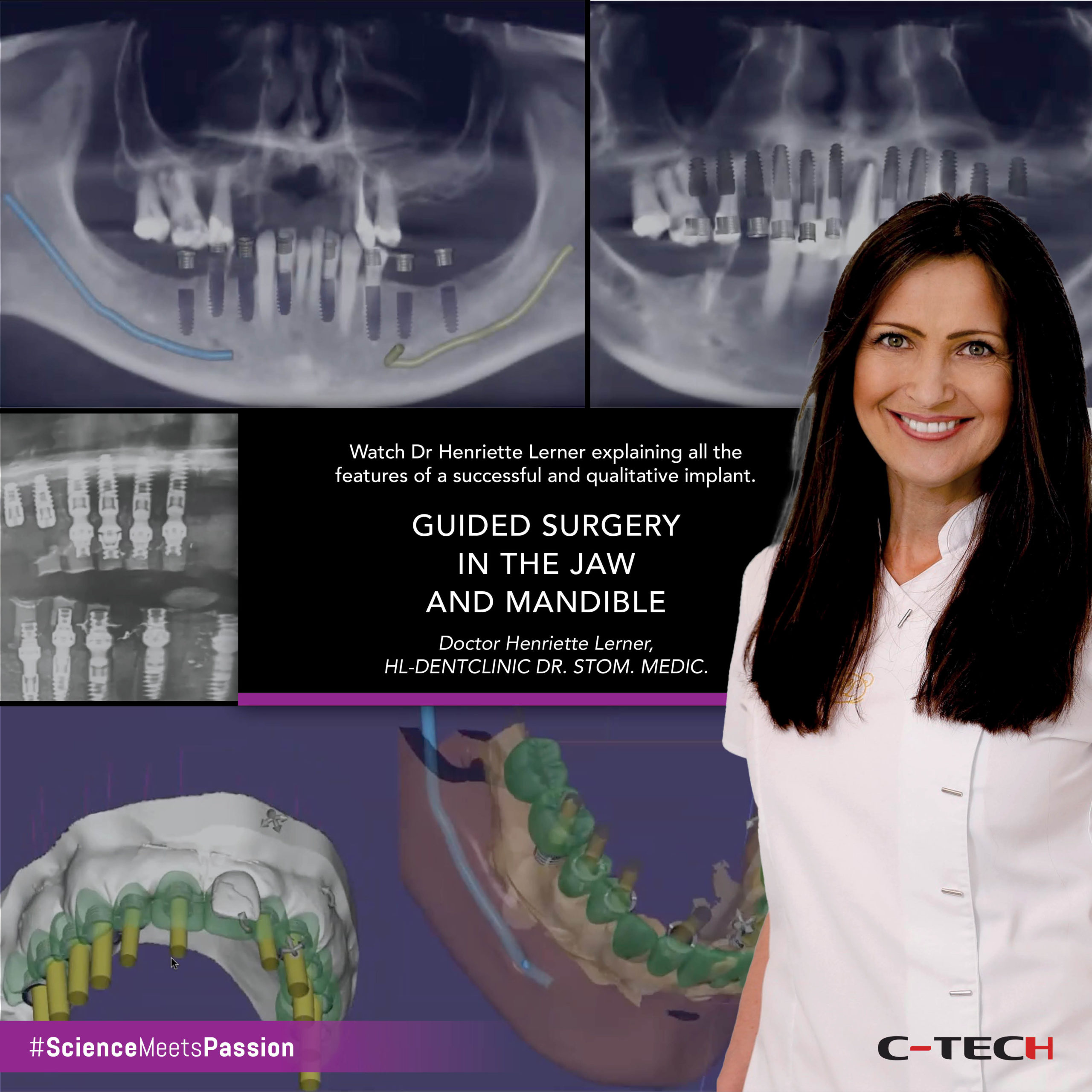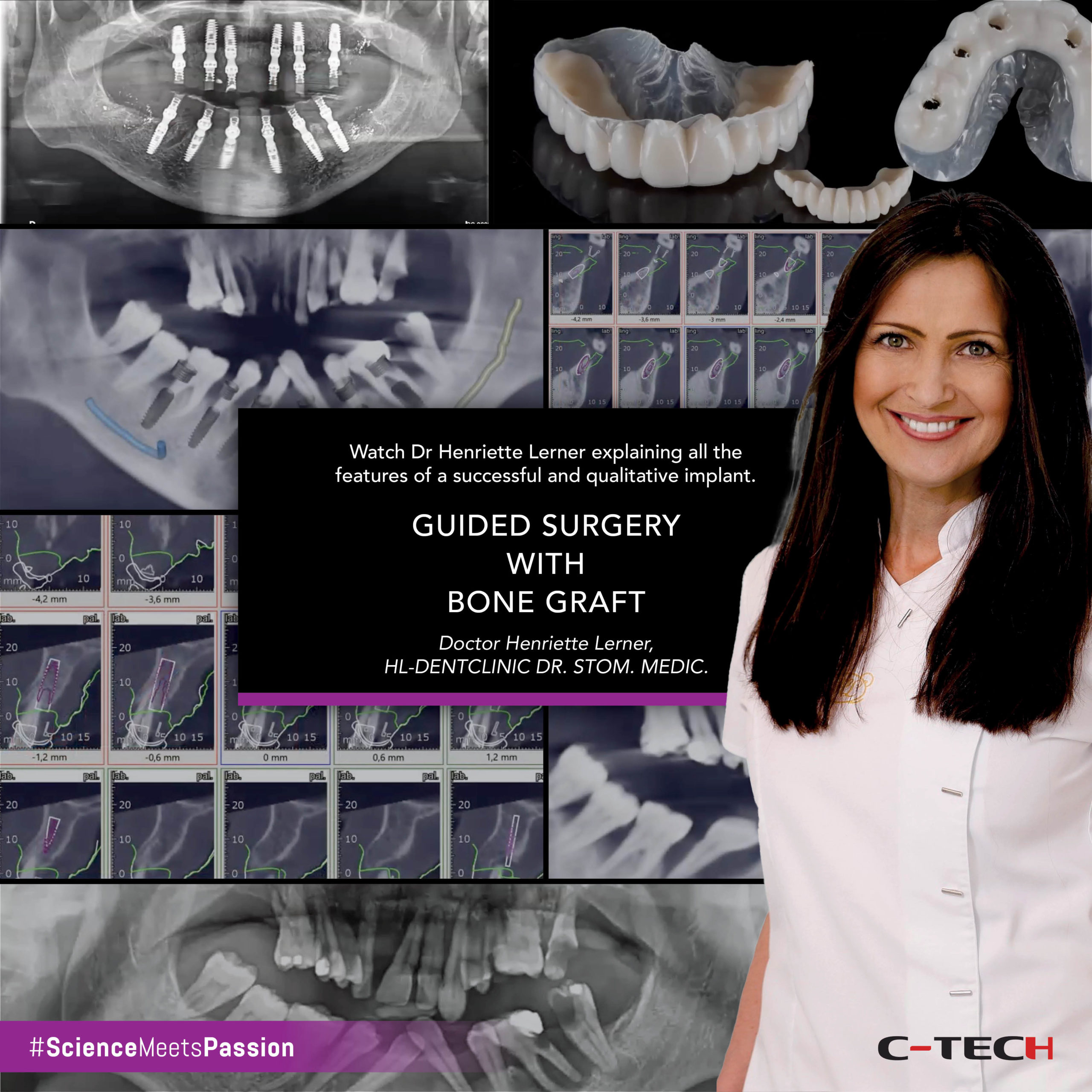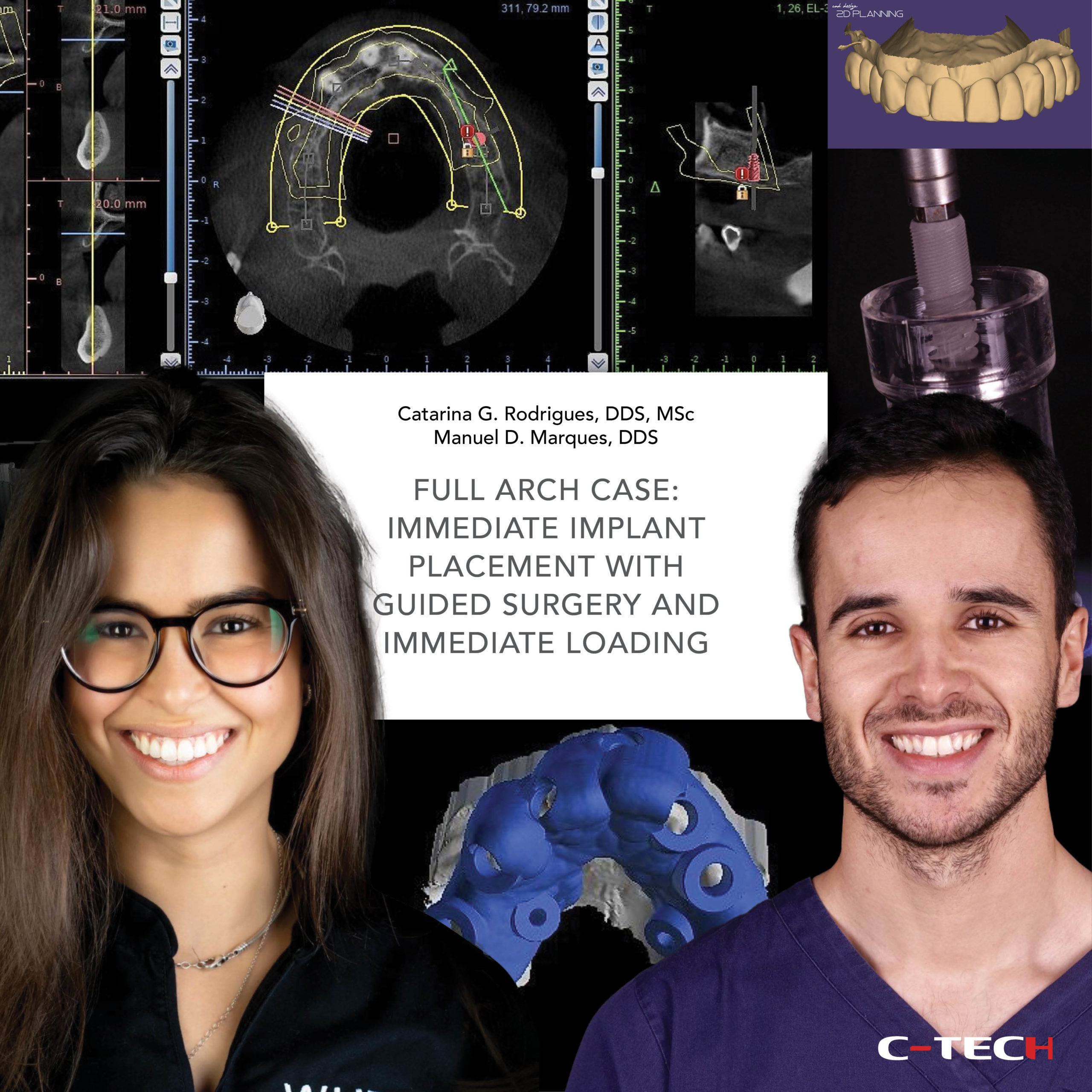Stabilization of Lower Removable Prosthesis with the Aid of 4 Mini Implants
Dr. Enrico Lettera, Italy
The video presents the crucial phases of the intervention for stabilizing the lower removable prosthesis by inserting four intra-oral mini-implants from C-Tech Implant, with a diameter of 2.1 mm and a height of 13 mm. This intervention was preceded by the creation of a total upper and lower prosthesis for the patient, executed according to the highest standards of precision and quality.
In preparation for the intervention, we asked the dental technician to duplicate the discarded lower prosthesis using transparent resin. This duplicate was modified with the addition of two metal markers positioned distally to the canines to facilitate localization during the surgical procedure. Before the surgery, the patient underwent a panoramic X-ray with the duplicate in the mouth. This radiographic image allowed us to precisely identify the distance of the markers from the emergence of the mental foramina, thus delineating a safe and well-defined working area.

During the surgical phase, we used the duplicate to perform the osteotomies, starting with the distal ones and proceeding with the central ones. It was essential to underprepare the site, both vertically and horizontally, taking advantage of the advanced features of the C-Tech mini-implants. These implants have an active tip, making them self-centering and self-drilling, facilitating insertion and improving initial stability.

The insertion of the implants was carried out in multiple phases: the first turns were performed using a Teflon carrier, followed by the use of a butterfly screwdriver for the subsequent turns. For the final turns, we used the carrier again and a torque wrench to verify reaching 30 Ncm, a necessary condition to proceed with the immediate loading of the prosthesis. It was crucial to ensure that the mini-implants were positioned as parallel as possible to ensure an even distribution of masticatory forces.

Once the correct torque was verified, we placed the collars on the implants and proceeded to discard the removable prosthesis. Under the collars, we inserted a rubber tube, which proved very useful during the relining phase, preventing the resin from getting stuck in the undercuts. Subsequently, we verified the passivity of the prosthesis and inserted the resin to perform the closed-mouth relining. After the hardening times, we removed the prosthesis from the oral cavity, finding the collars incorporated into the base of the prosthesis.
Finally, we checked the precontacts and occlusion to ensure perfect functionality of the prosthesis. The patient was then discharged with detailed instructions for post-operative care and the use of the new stabilized prosthesis.



